选择热点
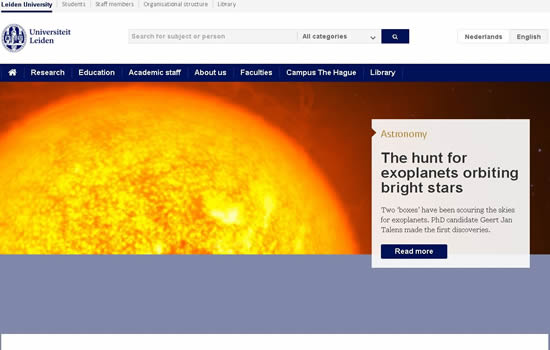 荷兰莱顿大学
荷兰莱顿大学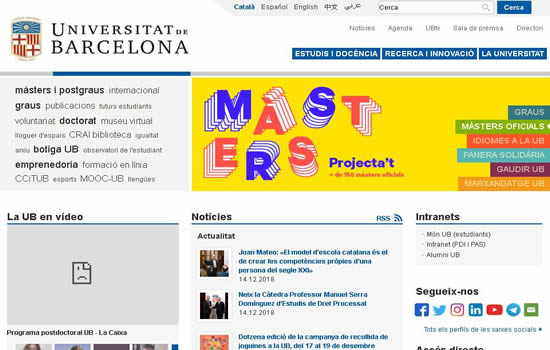 西班牙巴塞罗那大学
西班牙巴塞罗那大学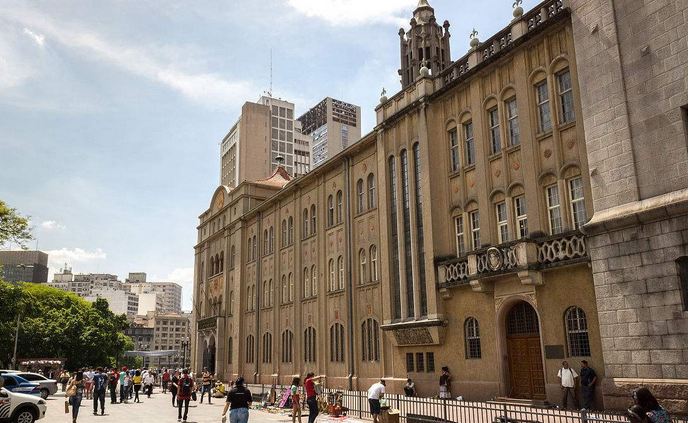 巴西圣保罗大学 University of Sao Paulo, Brazil
巴西圣保罗大学 University of Sao Paulo, Brazil 台湾南华大学 University of South China in Taiwan
台湾南华大学 University of South China in Taiwan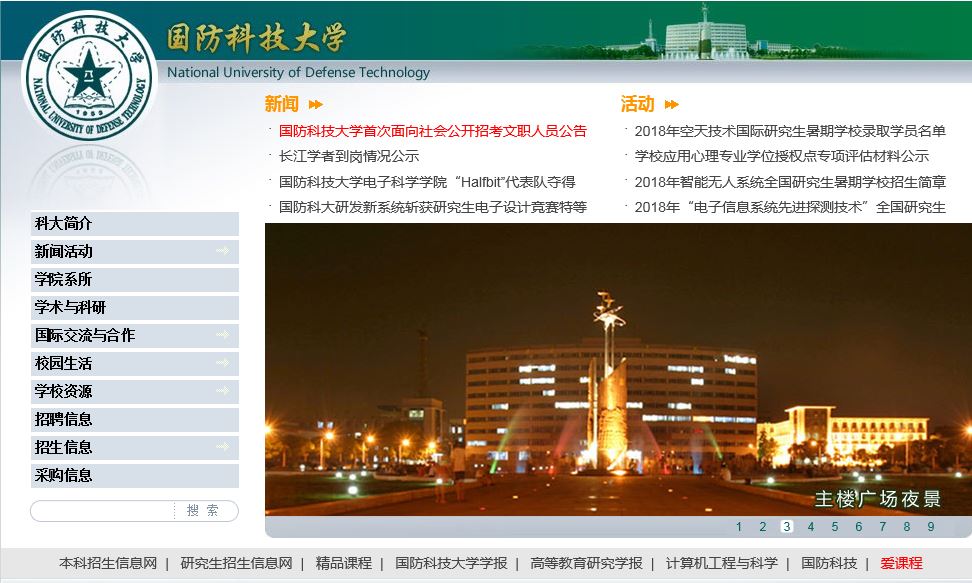 科技大学 National University of Defense Technology
科技大学 National University of Defense Technology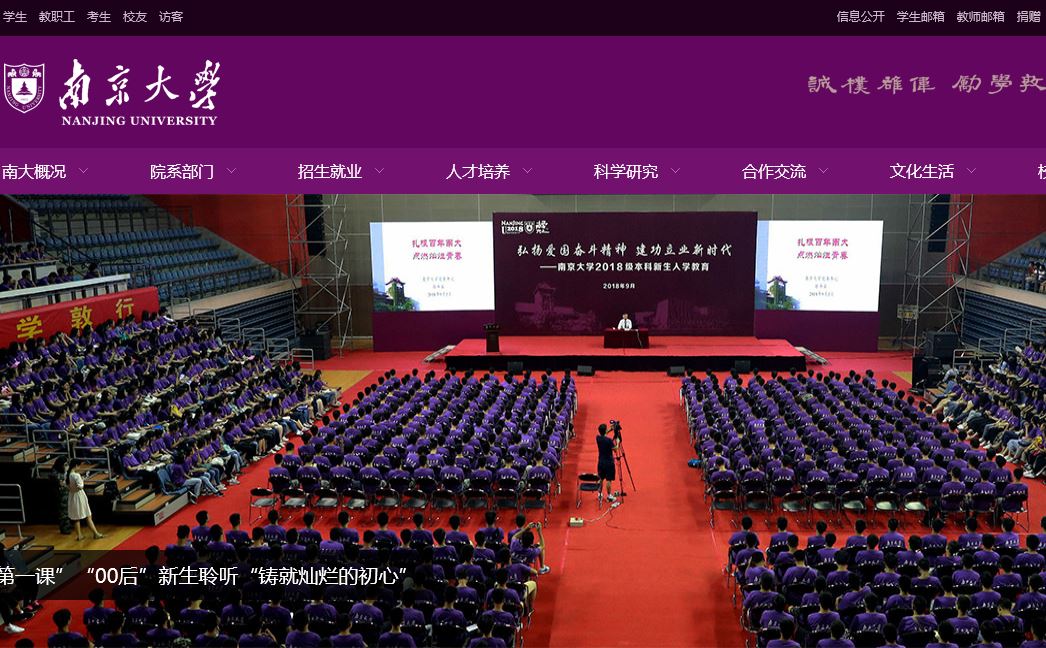 南京大学 Nanjing University
南京大学 Nanjing University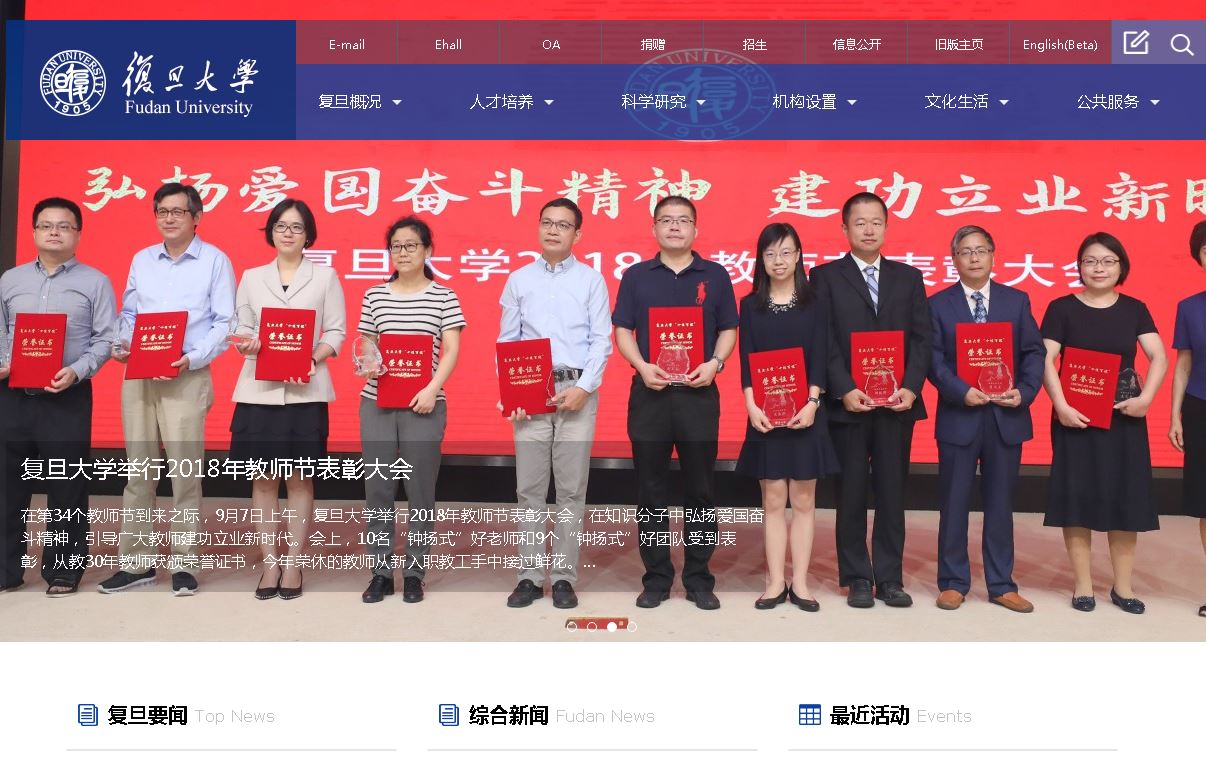 上海复旦大学 Fudan University
上海复旦大学 Fudan University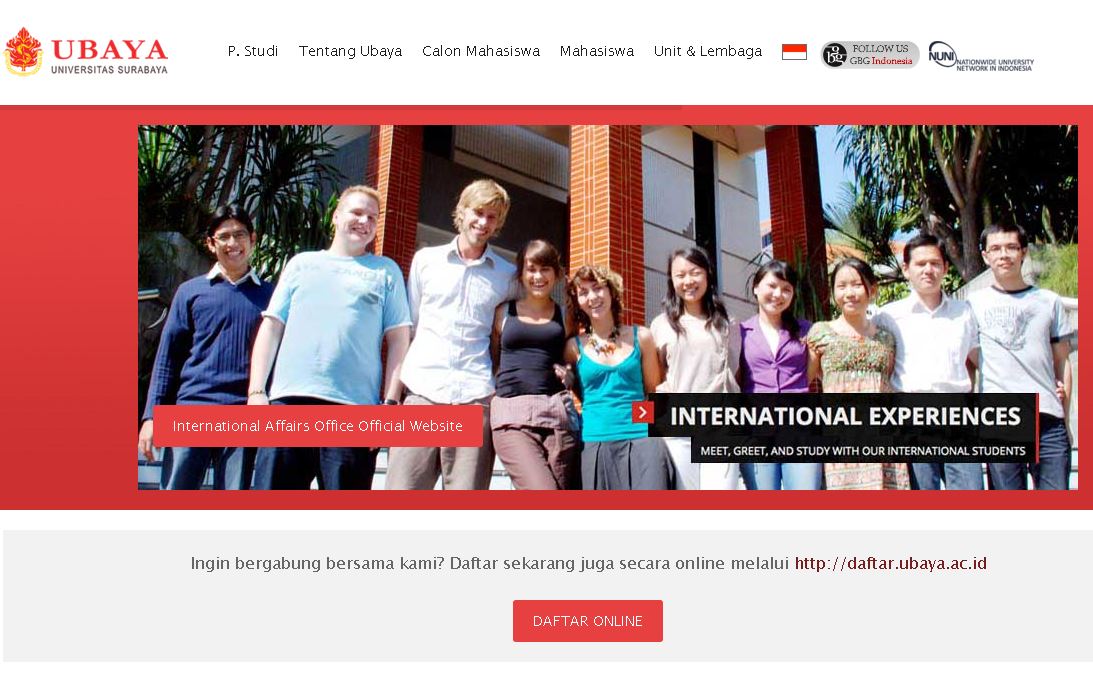 泗水大学(Ubaya)
泗水大学(Ubaya)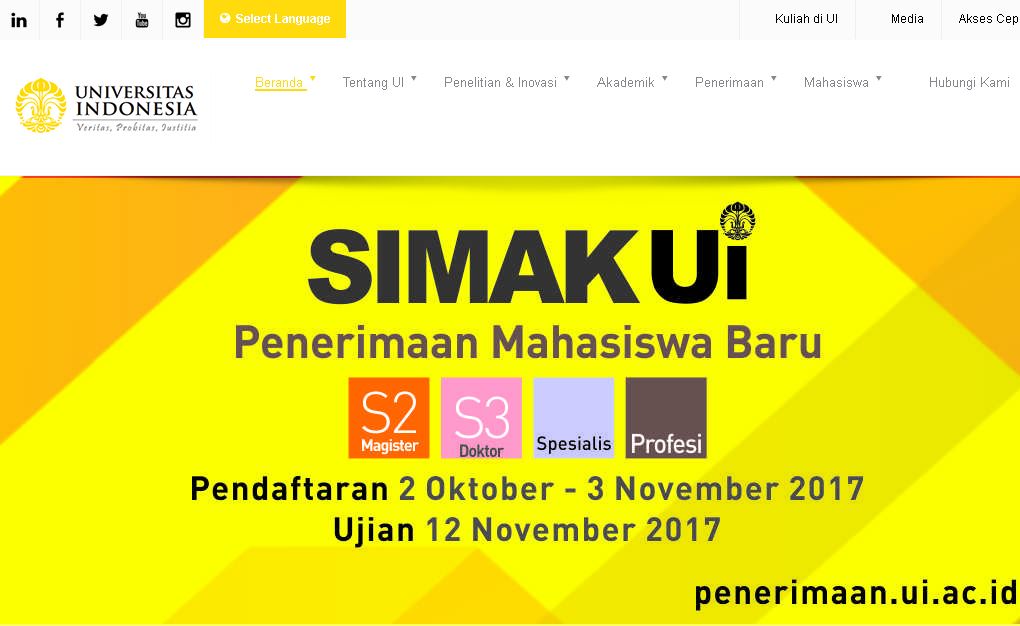 印尼大学 universitas indonesia
印尼大学 universitas indonesia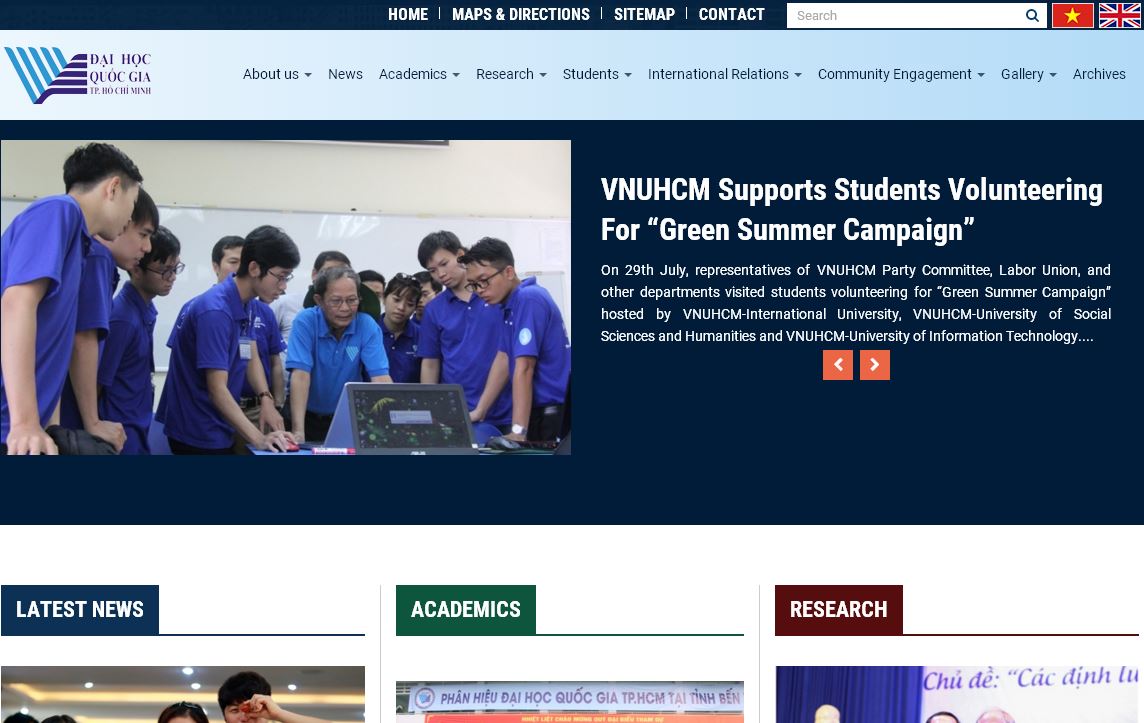 越南某大学 Vietnam National University
越南某大学 Vietnam National University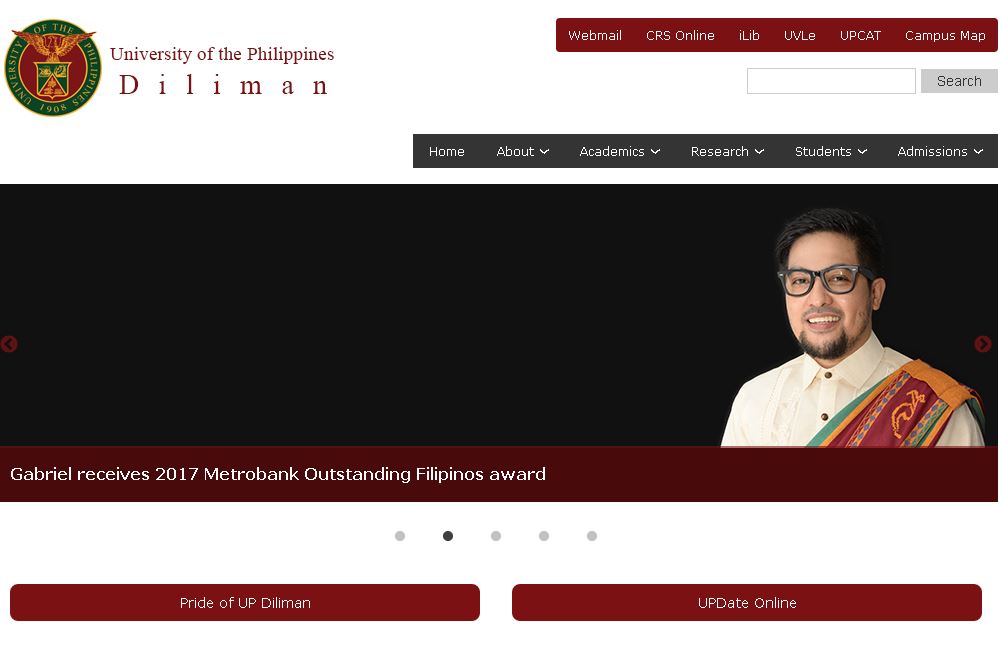 菲律宾大学 University Of The Philippines
菲律宾大学 University Of The Philippines
比尔•盖茨的小儿麻痹症之战
发布时间:2025-01-06
来源:大学网站
比尔•盖茨(Bill Gates)走进日内瓦世界卫生组织(World Health Organization)总部地下室管理全球流行病的办公室,准备参加一个会议,迎接他的却是坏消息:尽管他已经拿出七亿美元来努力消灭小儿麻痹症,此病却正在非洲各地蔓延。
Bill Gates walked into the World Health Organization's headquarters in Geneva-for a meeting in an underground chamber where global pandemics are managed-and was greeted by bad news.
Polio was spreading across Africa, even after he gave $700 million to try to wipe out the disease.
去年夏天,小儿麻痹症曾肆虐一时,本周在已经有19年没有出现过小儿麻痹症的塔吉克斯坦又爆发了新的疫情。
该病的蔓延威胁着全球最为宏大的健康运动之一,即消灭这种令患者残疾的疾病。
这也是微软(Microsoft Corp.
)创始人之一盖茨作为全职”慈善家的新职业生涯中的一个挫折。
That outbreak raged last summer, and this week a new outbreak hit Tajikistan, which hadn't seen polio for 19 years.
The spread threatens one of the most ambitious health campaigns in the world, the effort to destroy the crippling disease once and for all.
It also marks a setback for the Microsoft Corp.
co-founder's new career as full-time philanthropist.
下周,参与抗击小儿麻痹症的各个组织──包括世界卫生组织、联合国儿童基金会(Unicef)、国际扶轮社(Rotary International)和美国疾病预防控制中心(U.
S.
Centers for Disease Control and Prevention)──计划宣布重大战略调整,以更好地应对疫情爆发以来所暴露出来的不足。
Next week, the organizations behind the polio fight, including WHO, Unicef, Rotary International and U.
S.
Centers for Disease Control and Prevention, plan to announce a major revamp of their strategy to address shortcomings exposed by the outbreaks.
小儿麻痹症是盖茨慈善事业的一项核心内容。
去年,身家数十亿美元的盖茨到抗击小儿麻痹症的主要战场之一非洲,与医生、救援人员和一位穆斯林苏丹共商大计,以推进根除小儿麻痹症的努力。
Polio is a centerpiece of Mr.
Gates's charitable giving.
Last year the billionaire traveled to Africa, one of the main battlegrounds against the disease, to confer with doctors, aid workers and a sultan to propel the polio-eradication effort.
去年6月在世界卫生组织流行病中心召开的会议上,世卫组织官员艾伟德(Bruce Aylward)对盖茨说,没有任何办法来粉饰过去12个月的情形。
他讲述了在那些据信已经没有小儿麻痹症的国家,小儿麻痹病毒是如何蔓延的。
'There's no way to sugarcoat the last 12 months,' Bruce Aylward, a WHO official, told Mr.
Gates in the meeting in the underground pandemic center last June.
He described how the virus was rippling through countries believed to have stopped the disease.
盖茨问道:那么,我们接下来做什么?
Mr.
Gates asked: 'So, what do we do next?
'这个问题问到了全球卫生领域中最核心的话题之一:抗击小儿麻痹症这类具体疾病是否会更好地服务人类社会?
还是应该同时追求一系列更广泛的健康目标──改善卫生条件、扩大免疫范围、提供清洁饮用水,尽管这些措施不会消灭任何一种疾病,却有可能提高发展中国家人们的整体健康水平?
That question goes to the heart of one of the most controversial debates in global health: Is humanity better served by waging wars on individual diseases, like polio?
Or is it better to pursue a broader set of health goals simultaneously-improving hygiene, expanding immunizations, providing clean drinking water-that don't eliminate any one disease, but might improve the overall health of people in developing countries?
新的计划将两种手段结合起来。
去年夏天的疫情爆发让人们认识到:只有同时加强发展中国家的整体卫生体系,针对具体疾病的战斗才能取得胜利。
The new plan integrates both approaches.
It's an acknowledgment, bred by last summer's outbreak, that disease-specific wars can succeed only if they also strengthen the overall health system in poor countries.
如果计划成功,这项进行了调整的行动有望在未来几十年重塑全球卫生战略,并推动抗击其他疾病的努力。
如果失败的话,则可能成为人类抗击疾病的历史上最昂贵的判断失误之一。
毕竟,20多年的努力加上82亿美元的资金都没能消灭小儿麻痹症。
If successful, the recalibrated campaign could shape global health strategy for decades and boost fights against other diseases.
A failure could rank the effort as one of the most expensive miscalculations in mankind's long war with disease.
Already, polio has evaded a two-decade-long, $8.
2 billion effort to kill it off.
巨额捐赠人一直更喜欢抗击具体的疾病,也就是所谓的垂直”战略。
其目标是复制1979年人类对天花的胜利。
天花是有史以来唯一一种被根除的疾病。
与此相反,更广泛的水平”战略的目标则不甚明确,很多年都可能不会在全球整体健康状况数据中有任何体现。
Big donors have long preferred fighting individual diseases, known as a 'vertical' strategy.
The goal is to repeat 1979's victory over smallpox, the only disease ever to be eradicated.
By contrast, the broader, 'horizontal' strategy has less well-defined goals and might not move the needle of global health statistics for years.
对于也在为其他可能面临类似挫折的疫苗提供资金的盖茨基金会,抗击小儿麻痹症的战斗是一个教训。
在抗击小儿麻痹症的战斗中,他的基金会支持的是一个遵循过时游戏规则的项目。
去年小儿麻痹症的死灰复燃迫使对游戏规则进行重大修改。
The polio fight is a lesson for Mr.
Gates's foundation, which is funding other vaccines that could face similar setbacks.
In the polio fight, his foundation backed a program that was following an outdated playbook.
Polio's resurgence last year forced a major rewrite.
去年盖茨的尼日利亚之行帮助改变了抗击小儿麻痹症的战略。
尼日利亚有着向其他国家输出”小儿麻痹病毒的劣迹。
当时 华尔街日报 的一名记者随盖茨同行。
The shift on polio was informed by Mr.
Gates's trip last year to Nigeria, a nation with a history of exporting the virus to other countries.
Mr.
Gates was accompanied by a Wall Street Journal reporter2008年盖茨从微软退休后,就把自己塑造成了全球健康大使。
他利用自己的明星效应和盖茨基金会340亿美元的捐款来努力推动企业、卫生组织和各国政府来提高发展中国家的健康水平。
Mr.
Gates has forged himself as a global-health diplomat following his 2008 retirement from Microsoft.
He is using his star power and $34 billion philanthropy to try to push businesses, health groups and governments to improve health in developing countries在昔日庞大的伊斯兰帝国中心、如今灰尘满天的尼日利亚城市索科托,盖茨驱车前往一个宫殿,走过一排喇叭手,抬头看到宝座上身穿飘垂的长袍、头戴穆斯林头巾的男子──索科托的苏丹、尼日利亚7,000万穆斯林的精神领袖。
In the Nigerian city of Sokoto, the dusty center of a once vast Islamic empire, Mr.
Gates drove to a palace, walked past a row of trumpeters and found himself looking up at a man on a throne wearing a flowing robe and turban-the Sultan of Sokoto, spiritual leader of Nigeria's 70 million Muslims.
就在盖茨向苏丹做自我介绍的时候,灯光在摇曳之间熄灭了。
Just as Mr.
Gates introduced himself to the sultan, the lights flickered out.
在昏暗的房间里,苏丹坐在镶金座椅上对盖茨说,欢迎你来到真实的世界,真实的第三世界。
'I want to welcome you to the real world-to the real third world,' the sultan said to Mr.
Gates from his gilded chair in the darkened room.
像苏丹这样的人是重要的盟友。
2003年,尼日利亚北部的伊斯兰头领散布流言说,小儿麻痹疫苗可以使穆斯林女孩失去生育能力。
头领们叫停了疫苗接种,任由病毒扩散。
世界卫生组织说,病毒最终传到了20个国家。
Men like the sultan are important allies.
In 2003, Islamic leaders in northern Nigeria spread rumors that polio vaccines sterilized Muslim girls.
Leaders halted vaccinations, allowing the virus to spread.
The WHO said the virus eventually infected 20 countries.
截至去年年初,全球1,600例小儿麻痹症病例中有一半发生在尼日利亚。
这名苏丹能使这场战役重回正轨。
By the start of last year, Nigeria was home to half of the world's 1,600 polio cases.
The sultan could help get the campaign back on track.
这名苏丹向盖茨和一屋子宗教领袖宣布支持这场消灭小儿麻痹症之战。
他说,我们将向你们表明我们的承诺,你此行不会白费。
Speaking to Mr.
Gates and a room of religious leaders, the sultan declared his support for the polio fight.
'We want to show you our commitment,' he said.
'The time you have taken to come here will not be in vain.
'但他也怀疑只针对一种疾病是否明智。
这名苏丹说,其它健康问题也应考虑,而不是只朝着消除小儿麻痹症这一个方向努力。
他列举了肺结核、艾滋病、疟疾、霍乱和血吸虫病。
But he, too, questioned the wisdom of targeting one disease.
'Other health issues should be looked into,' the sultan said, 'instead of just facing one direction with polio eradication.
' He ticked off tuberculosis, HIV and AIDS, malaria, cholera and a parasitic infection known as 'snail fever.
'自30年前取得了消灭天花的全球性胜利之后,人们热衷于针对单一病种进行类似的垂直打击。
小儿麻痹症计划也遵循这种方式,并取得了巨大的进展。
在世卫和扶轮国际等捐助人的带领下,截至2000年,这场战役把全球小儿麻痹症的发病次数从1988年的35万例大幅减少到不足1,000例。
参加战役之人原计划在2000年之前彻底消除这种疾病。
After the global victory over smallpox 30 years ago, a rush of energy went into similar 'vertical' attacks on single diseases.
The polio program followed that approach and made great gains.
Led by WHO and donors such as Rotary, the campaigns by the year 2000 slashed the world's polio cases to under 1,000 from 350,000 in 1988.
Polio fighters planned to eradicate the disease by 2000.
然而时至今日,耗费了数十亿美元之后,小儿麻痹症仍然存在。
That date came and went.
But polio persisted, eating up billions of dollars.
批评人士主张逐步放弃消灭小儿麻痹症的作法,把腾出的资金用于防控多种疾病。
在某些国家,防疫体系甚至忽略了其它疾病的防控,把消灭小儿麻痹症计划当成自己仍在运转的证明。
盖茨在尼日利亚亲眼目睹了这一现象。
Critics argued for a shift away from killing polio to free up money for controlling multiple diseases.
In some countries, polio campaigns became an example of a functioning vaccination system even as other diseases were missed.
Mr.
Gates saw that himself in Nigeria.
索科托市的一家卫生所设置在一辆丰田小型货车内,车内堆放着健怡可乐。
盖茨走进车内后立刻靠在一张木质桌子上翻阅儿童防疫记录。
他指着一名男孩的白喉疫苗接种记录问道,你知不知道这个孩子是否打过第一针白百破三联疫苗?
这名男孩显然漏打了疫苗,但他身旁的医务人员却无言以对。
Arriving at a Sokoto health clinic in a Toyota minivan stocked with Diet Coke, Mr.
Gates stepped inside and was soon leaning on a wooden desk, flipping through children's vaccine records.
'Do you know if this child had the first dose of DPT?
' he asked, pointing to a record of a diphtheria vaccination of a boy who appeared to have missed a treatment.
A health worker beside him didn't have an answer.
这名医务人员说,由于政府供药系统有问题,诊所里也没有乙型肝炎和黄热病疫苗。
The clinic also had no hepatitis B and yellow fever vaccines, the workers said, because the government's system for supplying medicine wasn't working.
与之形成鲜明对比的是,诊所前的消灭小儿麻痹症工作正紧锣密鼓地展开。
医务人员看管的冰箱里装满了给孩子用的疫苗,许多孩子聚集在周围。
By contrast, in front of the clinic, a polio campaign was in full swing.
Health workers tended coolers filled with vials of vaccine for children gathered there.
次日在首都阿布贾召开的会议上,尼日利亚初级卫生保健工作负责人帕泰(Muhammad Ali Pate)又开始了一场垂直与水平”的讨论。
他说,即使尼日利亚减少了小儿麻痹症病例,没有一个更健全的医疗保健体系,这一进步也难以维系。
At a meeting the next day in the capital, Abuja, Nigeria's head of primary health care, Dr.
Muhammad Ali Pate, reopened the vertical-vs.
-horizontal debate.
Even if Nigeria lowers polio cases, he said, the gains 'can't hold' without a broader health-care system, he said.
盖茨坐在来宾席听他的发言。
他面前桌子的名牌上写着我们的客人”的字样。
帕泰展示了一幅卡通蒸气机火车的幻灯片,车厢上分别标注着教育”和疾病控制”。
他说,小儿麻痹症应当只是这列火车的一个车厢。
Mr.
Gates listened, seated behind a name tag that read 'Our Guest.
' Dr.
Pate showed a slide of a cartoon steam-engine train with cars labeled 'Education' and 'Disease Control.
' Polio should be just one car in that train, he said.
盖茨并不否认这一点。
他在接受采访时说,尼日利亚当然需要一个运转正常的卫生系统,但要分轻重缓急。
这个世界已经如此接近消灭小儿麻痹症的目标,像尼日利亚这样的国家应当把消灭小儿麻痹症当做其首要任务。
一旦成功,将能腾出数百万美元的资金,可用于改善更广阔的医疗保健领域。
Mr.
Gates didn't disagree-certainly Nigeria needs a functioning health system, he said in interviews.
But it was a matter of priorities, he said.
With the world so close to killing polio, countries like Nigeria should make eradication a top priority, he said.
Victory would free up millions of dollars to pay for broader health improvements.
他说,因此彻底消灭小儿麻痹症的好处巨大。
'So the benefit of finishing is huge,' he said.
在飞机上,盖茨筹划了其它有助于赢得这场战役的举措,并拒绝了一位宗教领袖的建议:强制免疫。
盖茨开玩笑说,我说,把他们捆起来,让我们把不打疫苗变成非法行为。
之后他又严肃地引述了美国推行强制免疫接种失败的例子。
On the plane, Mr.
Gates strategized about what else would help win the fight, balking at one religious leader's suggestion: forced vaccinations.
'Strap 'em, down, I say!
Let's make it illegal' to not take the vaccine, Mr.
Gates joked.
Then he got serious again, citing failed attempts in the U.
S.
to enforce compulsory vaccinations.
在许多方面,盖茨在内心中仍是一名科技狂人。
在飞机上,他详细解释了一系列科学问题,例如基因分型的进展,以及研究表明孟加拉国的疾病免疫率较高是由于粪口传播,即人们喝的水受到了污染,其中含有少量的疫苗。
In many respects, Mr.
Gates remains a tech geek at heart.
Aboard his plane, he expounded on an array of scientific topics: From developments in genotyping, to research showing that Bangladesh's high disease-immunity rates are due to 'oral-fecal' transmission (when people ingest vaccines from contaminated water).
盖茨在尼日利亚获得了外交上的胜利。
上文提到的那位苏丹和尼日利亚官员承诺将在小儿麻痹症免疫接种方面发挥更积极的作用。
在访问结束前,他对参会官员说,现在真的是全球成功消灭小儿麻痹症的重要关口。
In Nigeria, Mr.
Gates scored a diplomatic triumph.
He won commitments from the sultan, and from Nigeria's governors, to take a more active role in polio vaccinations.
'We really stand at the threshold of global health success on polio,' he told the assembled governors at the close of the trip.
然而仅三天后,2,000英里之外的乌干达又出现了新的病例。
一名妇女走进医院称他的儿子无法移动自己的左腿。
这是乌干达12年间的首例小儿麻痹症病例。
However, just three days later, a new front opened 2,000 miles away in Uganda.
There, a woman walked into a hospital to say her son couldn't move his left leg.
It was Uganda's first polio case in 12 years.
小儿麻痹症还突然开始在马里、多哥、加纳和科特迪瓦出现,这里已连续四年没有出现小儿麻痹症病例。
肯尼亚的一名女孩成为这个国家自2006年以来的首位小儿麻痹症患者。
Cases also popped up in Mali, Togo and Ghana and Cote d'Ivore, which hadn't reported polio for four years.
A girl in Kenya became that country's first polio case since 2006.
小儿麻痹症通过受人类粪便污染的水体传播,在感染人群中的致畸率仅为1/200,发现数起案例可能就意味着已有数千人被感染。
这迫切需要采取大规模的防疫行动。
Polio, which spreads through water contaminated by human feces, paralyzes just one person for every 200 infected.
Discovering just a few cases could mean that thousands have been infected.
That demands massive vaccination campaigns.
2009年2月28日,前述世卫官员艾伟德正和妻子、儿子一起在日内瓦选购生活用品时,突然收到一封有关乌干达疫情的加急电子邮件。
艾伟德站在一个波菜展示台旁边,在手机上工作了半个小时,启动了一套方案。
10天后,乌干达48,000名儿童接种了疫苗。
On Feb.
28, 2009, Mr.
Aylward, the WHO official, was grocery shopping in Geneva with his wife and son when he got an urgent email about the Uganda case.
For 30 minutes, Mr.
Aylward stood next to a spinach display, working his phone and setting in motion a plan that 10 days later vaccinated 48,000 children in Uganda.
像这种成本高昂的应急行动在去年变得越来越常见。
艾伟德说,盖茨基金会已划出4,700万美元专门用于应急行动。
到6月上旬,这笔钱正在逐渐减少。
Costly emergency responses like this became increasingly common last year.
The Gates Foundation had set $47 million aside for emergencies, Mr.
Aylward said.
By early June, the money was running down.
就在这个月,盖茨飞往日内瓦,去参加世界卫生组织地下室的那次会议。
That month, Mr.
Gates flew to Geneva for the meeting in the WHO's underground room.
艾伟德后来回忆说,他当时宣布了一些好消息,来抵消疫情反弹的坏消息。
在描绘了疫情的爆发之后,他把话题转移到尼日利亚防治小儿麻痹取得的进展,并讲述了一种新疫苗良好的试验结果。
Mr.
Aylward came with good news to offset the bad news about polio's resurgence, he recalled later.
After describing the outbreaks, he shifted to Nigeria's progress against polio and described positive results from a trial of a new vaccine.
但据数位参加一次后续会议的人士称,尽管有这些好消息,疫情反弹的风险仍然存在。
美国疾控中心高级顾问科基(Steve Cochi)说,当时事情正变得明显起来,病毒几乎是控制不住的;这可以说是证实了我们最坏的一些担忧。
But those positives didn't offset the risks of polio's revival, say several attendees of a follow-up meeting.
'It was becoming evident that the virus almost knew no bounds,' said Dr.
Steve Cochi, senior adviser at Centers for Disease Control.
'It kind of confirmed some of our worst fears.
'一个月后,在美国的西雅图,盖茨基金会的人员做报告时,定格在一张幻灯片上。
这张幻灯片显示,基金会的小儿麻痹症拨款正在逼近10亿美元。
对于一个似乎已陷入停滞的计划来说,这个数字令人吃惊。
一位与会人士说,在不对项目进行评估的情况下,我们不可能找山田忠孝和盖茨要更多的钱。
山田忠孝(Tachi Yamada)是盖茨基金会高级官员。
A month later in Seattle, Gates Foundation officials paused at a PowerPoint presentation showing the foundation's polio grants were approaching $1 billion.
It was a staggering amount for a program that appeared to be stalling.
'We can't go to Tachi and Bill and ask for more money,' without reviewing the program, one person said, referring to Mr.
Gates and Tachi Yamada, a top foundation official, according to an attendee.
8月份,专家们受世界卫生组织的委托赶赴安哥拉、巴基斯坦、阿富汗、印度和尼日利亚,对项目进行评估。
其中一支队伍在非洲发现,由于医疗体系薄弱,小儿麻痹症在一些国家一度消失后又死灰复燃。
在印度北部,卫生条件差、营养不良和其他肠道问题,被认定会降低小儿麻痹症口服疫苗的药效。
In August, experts commissioned by the WHO landed in Angola, Pakistan, Afghanistan, India and Nigeria to evaluate the polio program.
In Africa, a team found that once polio had been ended in some countries, weak health-care systems let it return.
In northern India, bad sanitation, malnutrition and other intestinal issues are believed to hurt the oral polio vaccine's effectiveness.
这些发现同盖茨在尼日利亚获得的信息差不多,并标志着盖茨基金会和这次行动的其他支持者在争论完全垂直”策略能否成功的过程中,出现了一个转折点。
These findings echoed the message to Mr.
Gates in Nigeria, and marked a turning point among the Gates Foundation and other backers of the polio fight in the debate over whether the strictly 'vertical' polio strategy could succeed.
10月份,盖茨基金会召集该计划的支持者在其西雅图总部进行一场较为彻底的反思,这些支持者包括联合国儿童基金会、美国疾病控制与预防中心和扶轮国际。
两个星期后,基金会又邀请独立专家来帮忙。
这些会议的结果将反映于下周出炉的修订版计划中。
行动的支持者表示,今年全世界只报告了71起小儿麻痹案例,而去年同期是328例,这让他们受到了鼓舞。
In October, the Gates Foundation summoned backers of the program, including Unicef, CDC and Rotary, to its Seattle headquarters for a major rethink.
Two weeks later it called in independent experts for help.
The outcome of those meetings will be reflected in the revamped plan coming next week.
Polio backers say they are buoyed by reports of just 71 polio cases worldwide this year, vs.
328 in the year-earlier period.
新的策略如果在5月份得到世界卫生组织各成员国的批准,它将为在2012年年底前接近根治小儿麻痹症定下宏伟的目标。
新的计划巩固了作为行动核心的垂直”方针,同时也加进了一个水平”策略,比如就保健和环境卫生等话题为卫生工作人员提供培训。
If approved in May by member nations of the WHO, the new strategy will set ambitious goals for getting close to eradicating polio by the end of 2012.
The plan bolsters the core 'vertical' approach of polio program but also adds a 'horizontal' strategy, including training for health workers on topics such as hygiene and sanitation.
尼日利亚将成为一个重要的试验场。
自盖茨访问以来,这个国家在防治小儿麻痹症方面已经取得长足进步。
但艾伟德说,消除尼日利亚和其他三个小儿麻痹症根深蒂固的国家中至少一个的疫情,将是接下来三年的主要挑战。
他说,如果不能实现这个目标,那么整个行动还会不会继续,就会存在疑问。
Nigeria will be a key testing ground.
The country has made strong progress against the disease since Mr.
Gates's visit.
But stopping polio there, and in at least one of the three other countries where it's deeply rooted, will be the main challenge in the next three years, Mr.
Aylward says.
Failure to achieve that goal will raise questions over whether the program continues, he says.
资金是一个很大的障碍。
这场防治小儿麻痹症的行动未来三年将需要26亿美元资金,目前存在14亿美元的缺口。
盖茨基金会将继续为行动拨款,但它表示,这个缺口是它无法填补的。
A big hurdle is money.
The polio program is $1.
4 billion short of the $2.
6 billion it needs over next three years.
The Gates Foundation will continue its polio grants, but says it can't make up the shortfall.
但资金也只是盖茨在新职业中遇的诸多问题之一。
他建立基金会,就是看中了救命疫苗的前景,这也反映了他利用科技解决问题的喜好。
而拨款流向国的政治、宗教和社会障碍也有可能对科技形成阻碍,这从防治小儿麻痹症的行动中就可以看出。
盖茨仍在学习怎样在这些障碍之中做到游刃有余。
But funding is just one worry for Mr.
Gates in his new career.
He built his foundation on the promise of life-saving vaccines, reflecting his penchant toward finding technological solutions to problems.
As polio shows, technology can be hampered by political, religious and societal obstacles in the countries where he's spending his money.
He's still learning how to navigate through those forces.
去年在尼日利亚的时候,盖茨坐在酒店后面的草坪上,就在琢磨这个问题。
他说,科学可以让这份工作简单化,但人性的因素才是最终的考验。
In Nigeria last year, Mr.
Gates sat on the lawn behind his hotel reflecting on that.
Science can simplify the job, he said, but 'the human piece is the ultimate test.
'【比尔•盖茨的小儿麻痹症之战查看网站:[db:时间]】
Bill Gates walked into the World Health Organization's headquarters in Geneva-for a meeting in an underground chamber where global pandemics are managed-and was greeted by bad news.
Polio was spreading across Africa, even after he gave $700 million to try to wipe out the disease.
去年夏天,小儿麻痹症曾肆虐一时,本周在已经有19年没有出现过小儿麻痹症的塔吉克斯坦又爆发了新的疫情。
该病的蔓延威胁着全球最为宏大的健康运动之一,即消灭这种令患者残疾的疾病。
这也是微软(Microsoft Corp.
)创始人之一盖茨作为全职”慈善家的新职业生涯中的一个挫折。
That outbreak raged last summer, and this week a new outbreak hit Tajikistan, which hadn't seen polio for 19 years.
The spread threatens one of the most ambitious health campaigns in the world, the effort to destroy the crippling disease once and for all.
It also marks a setback for the Microsoft Corp.
co-founder's new career as full-time philanthropist.
下周,参与抗击小儿麻痹症的各个组织──包括世界卫生组织、联合国儿童基金会(Unicef)、国际扶轮社(Rotary International)和美国疾病预防控制中心(U.
S.
Centers for Disease Control and Prevention)──计划宣布重大战略调整,以更好地应对疫情爆发以来所暴露出来的不足。
Next week, the organizations behind the polio fight, including WHO, Unicef, Rotary International and U.
S.
Centers for Disease Control and Prevention, plan to announce a major revamp of their strategy to address shortcomings exposed by the outbreaks.
小儿麻痹症是盖茨慈善事业的一项核心内容。
去年,身家数十亿美元的盖茨到抗击小儿麻痹症的主要战场之一非洲,与医生、救援人员和一位穆斯林苏丹共商大计,以推进根除小儿麻痹症的努力。
Polio is a centerpiece of Mr.
Gates's charitable giving.
Last year the billionaire traveled to Africa, one of the main battlegrounds against the disease, to confer with doctors, aid workers and a sultan to propel the polio-eradication effort.
去年6月在世界卫生组织流行病中心召开的会议上,世卫组织官员艾伟德(Bruce Aylward)对盖茨说,没有任何办法来粉饰过去12个月的情形。
他讲述了在那些据信已经没有小儿麻痹症的国家,小儿麻痹病毒是如何蔓延的。
'There's no way to sugarcoat the last 12 months,' Bruce Aylward, a WHO official, told Mr.
Gates in the meeting in the underground pandemic center last June.
He described how the virus was rippling through countries believed to have stopped the disease.
盖茨问道:那么,我们接下来做什么?
Mr.
Gates asked: 'So, what do we do next?
'这个问题问到了全球卫生领域中最核心的话题之一:抗击小儿麻痹症这类具体疾病是否会更好地服务人类社会?
还是应该同时追求一系列更广泛的健康目标──改善卫生条件、扩大免疫范围、提供清洁饮用水,尽管这些措施不会消灭任何一种疾病,却有可能提高发展中国家人们的整体健康水平?
That question goes to the heart of one of the most controversial debates in global health: Is humanity better served by waging wars on individual diseases, like polio?
Or is it better to pursue a broader set of health goals simultaneously-improving hygiene, expanding immunizations, providing clean drinking water-that don't eliminate any one disease, but might improve the overall health of people in developing countries?
新的计划将两种手段结合起来。
去年夏天的疫情爆发让人们认识到:只有同时加强发展中国家的整体卫生体系,针对具体疾病的战斗才能取得胜利。
The new plan integrates both approaches.
It's an acknowledgment, bred by last summer's outbreak, that disease-specific wars can succeed only if they also strengthen the overall health system in poor countries.
如果计划成功,这项进行了调整的行动有望在未来几十年重塑全球卫生战略,并推动抗击其他疾病的努力。
如果失败的话,则可能成为人类抗击疾病的历史上最昂贵的判断失误之一。
毕竟,20多年的努力加上82亿美元的资金都没能消灭小儿麻痹症。
If successful, the recalibrated campaign could shape global health strategy for decades and boost fights against other diseases.
A failure could rank the effort as one of the most expensive miscalculations in mankind's long war with disease.
Already, polio has evaded a two-decade-long, $8.
2 billion effort to kill it off.
巨额捐赠人一直更喜欢抗击具体的疾病,也就是所谓的垂直”战略。
其目标是复制1979年人类对天花的胜利。
天花是有史以来唯一一种被根除的疾病。
与此相反,更广泛的水平”战略的目标则不甚明确,很多年都可能不会在全球整体健康状况数据中有任何体现。
Big donors have long preferred fighting individual diseases, known as a 'vertical' strategy.
The goal is to repeat 1979's victory over smallpox, the only disease ever to be eradicated.
By contrast, the broader, 'horizontal' strategy has less well-defined goals and might not move the needle of global health statistics for years.
对于也在为其他可能面临类似挫折的疫苗提供资金的盖茨基金会,抗击小儿麻痹症的战斗是一个教训。
在抗击小儿麻痹症的战斗中,他的基金会支持的是一个遵循过时游戏规则的项目。
去年小儿麻痹症的死灰复燃迫使对游戏规则进行重大修改。
The polio fight is a lesson for Mr.
Gates's foundation, which is funding other vaccines that could face similar setbacks.
In the polio fight, his foundation backed a program that was following an outdated playbook.
Polio's resurgence last year forced a major rewrite.
去年盖茨的尼日利亚之行帮助改变了抗击小儿麻痹症的战略。
尼日利亚有着向其他国家输出”小儿麻痹病毒的劣迹。
当时 华尔街日报 的一名记者随盖茨同行。
The shift on polio was informed by Mr.
Gates's trip last year to Nigeria, a nation with a history of exporting the virus to other countries.
Mr.
Gates was accompanied by a Wall Street Journal reporter2008年盖茨从微软退休后,就把自己塑造成了全球健康大使。
他利用自己的明星效应和盖茨基金会340亿美元的捐款来努力推动企业、卫生组织和各国政府来提高发展中国家的健康水平。
Mr.
Gates has forged himself as a global-health diplomat following his 2008 retirement from Microsoft.
He is using his star power and $34 billion philanthropy to try to push businesses, health groups and governments to improve health in developing countries在昔日庞大的伊斯兰帝国中心、如今灰尘满天的尼日利亚城市索科托,盖茨驱车前往一个宫殿,走过一排喇叭手,抬头看到宝座上身穿飘垂的长袍、头戴穆斯林头巾的男子──索科托的苏丹、尼日利亚7,000万穆斯林的精神领袖。
In the Nigerian city of Sokoto, the dusty center of a once vast Islamic empire, Mr.
Gates drove to a palace, walked past a row of trumpeters and found himself looking up at a man on a throne wearing a flowing robe and turban-the Sultan of Sokoto, spiritual leader of Nigeria's 70 million Muslims.
就在盖茨向苏丹做自我介绍的时候,灯光在摇曳之间熄灭了。
Just as Mr.
Gates introduced himself to the sultan, the lights flickered out.
在昏暗的房间里,苏丹坐在镶金座椅上对盖茨说,欢迎你来到真实的世界,真实的第三世界。
'I want to welcome you to the real world-to the real third world,' the sultan said to Mr.
Gates from his gilded chair in the darkened room.
像苏丹这样的人是重要的盟友。
2003年,尼日利亚北部的伊斯兰头领散布流言说,小儿麻痹疫苗可以使穆斯林女孩失去生育能力。
头领们叫停了疫苗接种,任由病毒扩散。
世界卫生组织说,病毒最终传到了20个国家。
Men like the sultan are important allies.
In 2003, Islamic leaders in northern Nigeria spread rumors that polio vaccines sterilized Muslim girls.
Leaders halted vaccinations, allowing the virus to spread.
The WHO said the virus eventually infected 20 countries.
截至去年年初,全球1,600例小儿麻痹症病例中有一半发生在尼日利亚。
这名苏丹能使这场战役重回正轨。
By the start of last year, Nigeria was home to half of the world's 1,600 polio cases.
The sultan could help get the campaign back on track.
这名苏丹向盖茨和一屋子宗教领袖宣布支持这场消灭小儿麻痹症之战。
他说,我们将向你们表明我们的承诺,你此行不会白费。
Speaking to Mr.
Gates and a room of religious leaders, the sultan declared his support for the polio fight.
'We want to show you our commitment,' he said.
'The time you have taken to come here will not be in vain.
'但他也怀疑只针对一种疾病是否明智。
这名苏丹说,其它健康问题也应考虑,而不是只朝着消除小儿麻痹症这一个方向努力。
他列举了肺结核、艾滋病、疟疾、霍乱和血吸虫病。
But he, too, questioned the wisdom of targeting one disease.
'Other health issues should be looked into,' the sultan said, 'instead of just facing one direction with polio eradication.
' He ticked off tuberculosis, HIV and AIDS, malaria, cholera and a parasitic infection known as 'snail fever.
'自30年前取得了消灭天花的全球性胜利之后,人们热衷于针对单一病种进行类似的垂直打击。
小儿麻痹症计划也遵循这种方式,并取得了巨大的进展。
在世卫和扶轮国际等捐助人的带领下,截至2000年,这场战役把全球小儿麻痹症的发病次数从1988年的35万例大幅减少到不足1,000例。
参加战役之人原计划在2000年之前彻底消除这种疾病。
After the global victory over smallpox 30 years ago, a rush of energy went into similar 'vertical' attacks on single diseases.
The polio program followed that approach and made great gains.
Led by WHO and donors such as Rotary, the campaigns by the year 2000 slashed the world's polio cases to under 1,000 from 350,000 in 1988.
Polio fighters planned to eradicate the disease by 2000.
然而时至今日,耗费了数十亿美元之后,小儿麻痹症仍然存在。
That date came and went.
But polio persisted, eating up billions of dollars.
批评人士主张逐步放弃消灭小儿麻痹症的作法,把腾出的资金用于防控多种疾病。
在某些国家,防疫体系甚至忽略了其它疾病的防控,把消灭小儿麻痹症计划当成自己仍在运转的证明。
盖茨在尼日利亚亲眼目睹了这一现象。
Critics argued for a shift away from killing polio to free up money for controlling multiple diseases.
In some countries, polio campaigns became an example of a functioning vaccination system even as other diseases were missed.
Mr.
Gates saw that himself in Nigeria.
索科托市的一家卫生所设置在一辆丰田小型货车内,车内堆放着健怡可乐。
盖茨走进车内后立刻靠在一张木质桌子上翻阅儿童防疫记录。
他指着一名男孩的白喉疫苗接种记录问道,你知不知道这个孩子是否打过第一针白百破三联疫苗?
这名男孩显然漏打了疫苗,但他身旁的医务人员却无言以对。
Arriving at a Sokoto health clinic in a Toyota minivan stocked with Diet Coke, Mr.
Gates stepped inside and was soon leaning on a wooden desk, flipping through children's vaccine records.
'Do you know if this child had the first dose of DPT?
' he asked, pointing to a record of a diphtheria vaccination of a boy who appeared to have missed a treatment.
A health worker beside him didn't have an answer.
这名医务人员说,由于政府供药系统有问题,诊所里也没有乙型肝炎和黄热病疫苗。
The clinic also had no hepatitis B and yellow fever vaccines, the workers said, because the government's system for supplying medicine wasn't working.
与之形成鲜明对比的是,诊所前的消灭小儿麻痹症工作正紧锣密鼓地展开。
医务人员看管的冰箱里装满了给孩子用的疫苗,许多孩子聚集在周围。
By contrast, in front of the clinic, a polio campaign was in full swing.
Health workers tended coolers filled with vials of vaccine for children gathered there.
次日在首都阿布贾召开的会议上,尼日利亚初级卫生保健工作负责人帕泰(Muhammad Ali Pate)又开始了一场垂直与水平”的讨论。
他说,即使尼日利亚减少了小儿麻痹症病例,没有一个更健全的医疗保健体系,这一进步也难以维系。
At a meeting the next day in the capital, Abuja, Nigeria's head of primary health care, Dr.
Muhammad Ali Pate, reopened the vertical-vs.
-horizontal debate.
Even if Nigeria lowers polio cases, he said, the gains 'can't hold' without a broader health-care system, he said.
盖茨坐在来宾席听他的发言。
他面前桌子的名牌上写着我们的客人”的字样。
帕泰展示了一幅卡通蒸气机火车的幻灯片,车厢上分别标注着教育”和疾病控制”。
他说,小儿麻痹症应当只是这列火车的一个车厢。
Mr.
Gates listened, seated behind a name tag that read 'Our Guest.
' Dr.
Pate showed a slide of a cartoon steam-engine train with cars labeled 'Education' and 'Disease Control.
' Polio should be just one car in that train, he said.
盖茨并不否认这一点。
他在接受采访时说,尼日利亚当然需要一个运转正常的卫生系统,但要分轻重缓急。
这个世界已经如此接近消灭小儿麻痹症的目标,像尼日利亚这样的国家应当把消灭小儿麻痹症当做其首要任务。
一旦成功,将能腾出数百万美元的资金,可用于改善更广阔的医疗保健领域。
Mr.
Gates didn't disagree-certainly Nigeria needs a functioning health system, he said in interviews.
But it was a matter of priorities, he said.
With the world so close to killing polio, countries like Nigeria should make eradication a top priority, he said.
Victory would free up millions of dollars to pay for broader health improvements.
他说,因此彻底消灭小儿麻痹症的好处巨大。
'So the benefit of finishing is huge,' he said.
在飞机上,盖茨筹划了其它有助于赢得这场战役的举措,并拒绝了一位宗教领袖的建议:强制免疫。
盖茨开玩笑说,我说,把他们捆起来,让我们把不打疫苗变成非法行为。
之后他又严肃地引述了美国推行强制免疫接种失败的例子。
On the plane, Mr.
Gates strategized about what else would help win the fight, balking at one religious leader's suggestion: forced vaccinations.
'Strap 'em, down, I say!
Let's make it illegal' to not take the vaccine, Mr.
Gates joked.
Then he got serious again, citing failed attempts in the U.
S.
to enforce compulsory vaccinations.
在许多方面,盖茨在内心中仍是一名科技狂人。
在飞机上,他详细解释了一系列科学问题,例如基因分型的进展,以及研究表明孟加拉国的疾病免疫率较高是由于粪口传播,即人们喝的水受到了污染,其中含有少量的疫苗。
In many respects, Mr.
Gates remains a tech geek at heart.
Aboard his plane, he expounded on an array of scientific topics: From developments in genotyping, to research showing that Bangladesh's high disease-immunity rates are due to 'oral-fecal' transmission (when people ingest vaccines from contaminated water).
盖茨在尼日利亚获得了外交上的胜利。
上文提到的那位苏丹和尼日利亚官员承诺将在小儿麻痹症免疫接种方面发挥更积极的作用。
在访问结束前,他对参会官员说,现在真的是全球成功消灭小儿麻痹症的重要关口。
In Nigeria, Mr.
Gates scored a diplomatic triumph.
He won commitments from the sultan, and from Nigeria's governors, to take a more active role in polio vaccinations.
'We really stand at the threshold of global health success on polio,' he told the assembled governors at the close of the trip.
然而仅三天后,2,000英里之外的乌干达又出现了新的病例。
一名妇女走进医院称他的儿子无法移动自己的左腿。
这是乌干达12年间的首例小儿麻痹症病例。
However, just three days later, a new front opened 2,000 miles away in Uganda.
There, a woman walked into a hospital to say her son couldn't move his left leg.
It was Uganda's first polio case in 12 years.
小儿麻痹症还突然开始在马里、多哥、加纳和科特迪瓦出现,这里已连续四年没有出现小儿麻痹症病例。
肯尼亚的一名女孩成为这个国家自2006年以来的首位小儿麻痹症患者。
Cases also popped up in Mali, Togo and Ghana and Cote d'Ivore, which hadn't reported polio for four years.
A girl in Kenya became that country's first polio case since 2006.
小儿麻痹症通过受人类粪便污染的水体传播,在感染人群中的致畸率仅为1/200,发现数起案例可能就意味着已有数千人被感染。
这迫切需要采取大规模的防疫行动。
Polio, which spreads through water contaminated by human feces, paralyzes just one person for every 200 infected.
Discovering just a few cases could mean that thousands have been infected.
That demands massive vaccination campaigns.
2009年2月28日,前述世卫官员艾伟德正和妻子、儿子一起在日内瓦选购生活用品时,突然收到一封有关乌干达疫情的加急电子邮件。
艾伟德站在一个波菜展示台旁边,在手机上工作了半个小时,启动了一套方案。
10天后,乌干达48,000名儿童接种了疫苗。
On Feb.
28, 2009, Mr.
Aylward, the WHO official, was grocery shopping in Geneva with his wife and son when he got an urgent email about the Uganda case.
For 30 minutes, Mr.
Aylward stood next to a spinach display, working his phone and setting in motion a plan that 10 days later vaccinated 48,000 children in Uganda.
像这种成本高昂的应急行动在去年变得越来越常见。
艾伟德说,盖茨基金会已划出4,700万美元专门用于应急行动。
到6月上旬,这笔钱正在逐渐减少。
Costly emergency responses like this became increasingly common last year.
The Gates Foundation had set $47 million aside for emergencies, Mr.
Aylward said.
By early June, the money was running down.
就在这个月,盖茨飞往日内瓦,去参加世界卫生组织地下室的那次会议。
That month, Mr.
Gates flew to Geneva for the meeting in the WHO's underground room.
艾伟德后来回忆说,他当时宣布了一些好消息,来抵消疫情反弹的坏消息。
在描绘了疫情的爆发之后,他把话题转移到尼日利亚防治小儿麻痹取得的进展,并讲述了一种新疫苗良好的试验结果。
Mr.
Aylward came with good news to offset the bad news about polio's resurgence, he recalled later.
After describing the outbreaks, he shifted to Nigeria's progress against polio and described positive results from a trial of a new vaccine.
但据数位参加一次后续会议的人士称,尽管有这些好消息,疫情反弹的风险仍然存在。
美国疾控中心高级顾问科基(Steve Cochi)说,当时事情正变得明显起来,病毒几乎是控制不住的;这可以说是证实了我们最坏的一些担忧。
But those positives didn't offset the risks of polio's revival, say several attendees of a follow-up meeting.
'It was becoming evident that the virus almost knew no bounds,' said Dr.
Steve Cochi, senior adviser at Centers for Disease Control.
'It kind of confirmed some of our worst fears.
'一个月后,在美国的西雅图,盖茨基金会的人员做报告时,定格在一张幻灯片上。
这张幻灯片显示,基金会的小儿麻痹症拨款正在逼近10亿美元。
对于一个似乎已陷入停滞的计划来说,这个数字令人吃惊。
一位与会人士说,在不对项目进行评估的情况下,我们不可能找山田忠孝和盖茨要更多的钱。
山田忠孝(Tachi Yamada)是盖茨基金会高级官员。
A month later in Seattle, Gates Foundation officials paused at a PowerPoint presentation showing the foundation's polio grants were approaching $1 billion.
It was a staggering amount for a program that appeared to be stalling.
'We can't go to Tachi and Bill and ask for more money,' without reviewing the program, one person said, referring to Mr.
Gates and Tachi Yamada, a top foundation official, according to an attendee.
8月份,专家们受世界卫生组织的委托赶赴安哥拉、巴基斯坦、阿富汗、印度和尼日利亚,对项目进行评估。
其中一支队伍在非洲发现,由于医疗体系薄弱,小儿麻痹症在一些国家一度消失后又死灰复燃。
在印度北部,卫生条件差、营养不良和其他肠道问题,被认定会降低小儿麻痹症口服疫苗的药效。
In August, experts commissioned by the WHO landed in Angola, Pakistan, Afghanistan, India and Nigeria to evaluate the polio program.
In Africa, a team found that once polio had been ended in some countries, weak health-care systems let it return.
In northern India, bad sanitation, malnutrition and other intestinal issues are believed to hurt the oral polio vaccine's effectiveness.
这些发现同盖茨在尼日利亚获得的信息差不多,并标志着盖茨基金会和这次行动的其他支持者在争论完全垂直”策略能否成功的过程中,出现了一个转折点。
These findings echoed the message to Mr.
Gates in Nigeria, and marked a turning point among the Gates Foundation and other backers of the polio fight in the debate over whether the strictly 'vertical' polio strategy could succeed.
10月份,盖茨基金会召集该计划的支持者在其西雅图总部进行一场较为彻底的反思,这些支持者包括联合国儿童基金会、美国疾病控制与预防中心和扶轮国际。
两个星期后,基金会又邀请独立专家来帮忙。
这些会议的结果将反映于下周出炉的修订版计划中。
行动的支持者表示,今年全世界只报告了71起小儿麻痹案例,而去年同期是328例,这让他们受到了鼓舞。
In October, the Gates Foundation summoned backers of the program, including Unicef, CDC and Rotary, to its Seattle headquarters for a major rethink.
Two weeks later it called in independent experts for help.
The outcome of those meetings will be reflected in the revamped plan coming next week.
Polio backers say they are buoyed by reports of just 71 polio cases worldwide this year, vs.
328 in the year-earlier period.
新的策略如果在5月份得到世界卫生组织各成员国的批准,它将为在2012年年底前接近根治小儿麻痹症定下宏伟的目标。
新的计划巩固了作为行动核心的垂直”方针,同时也加进了一个水平”策略,比如就保健和环境卫生等话题为卫生工作人员提供培训。
If approved in May by member nations of the WHO, the new strategy will set ambitious goals for getting close to eradicating polio by the end of 2012.
The plan bolsters the core 'vertical' approach of polio program but also adds a 'horizontal' strategy, including training for health workers on topics such as hygiene and sanitation.
尼日利亚将成为一个重要的试验场。
自盖茨访问以来,这个国家在防治小儿麻痹症方面已经取得长足进步。
但艾伟德说,消除尼日利亚和其他三个小儿麻痹症根深蒂固的国家中至少一个的疫情,将是接下来三年的主要挑战。
他说,如果不能实现这个目标,那么整个行动还会不会继续,就会存在疑问。
Nigeria will be a key testing ground.
The country has made strong progress against the disease since Mr.
Gates's visit.
But stopping polio there, and in at least one of the three other countries where it's deeply rooted, will be the main challenge in the next three years, Mr.
Aylward says.
Failure to achieve that goal will raise questions over whether the program continues, he says.
资金是一个很大的障碍。
这场防治小儿麻痹症的行动未来三年将需要26亿美元资金,目前存在14亿美元的缺口。
盖茨基金会将继续为行动拨款,但它表示,这个缺口是它无法填补的。
A big hurdle is money.
The polio program is $1.
4 billion short of the $2.
6 billion it needs over next three years.
The Gates Foundation will continue its polio grants, but says it can't make up the shortfall.
但资金也只是盖茨在新职业中遇的诸多问题之一。
他建立基金会,就是看中了救命疫苗的前景,这也反映了他利用科技解决问题的喜好。
而拨款流向国的政治、宗教和社会障碍也有可能对科技形成阻碍,这从防治小儿麻痹症的行动中就可以看出。
盖茨仍在学习怎样在这些障碍之中做到游刃有余。
But funding is just one worry for Mr.
Gates in his new career.
He built his foundation on the promise of life-saving vaccines, reflecting his penchant toward finding technological solutions to problems.
As polio shows, technology can be hampered by political, religious and societal obstacles in the countries where he's spending his money.
He's still learning how to navigate through those forces.
去年在尼日利亚的时候,盖茨坐在酒店后面的草坪上,就在琢磨这个问题。
他说,科学可以让这份工作简单化,但人性的因素才是最终的考验。
In Nigeria last year, Mr.
Gates sat on the lawn behind his hotel reflecting on that.
Science can simplify the job, he said, but 'the human piece is the ultimate test.
'【比尔•盖茨的小儿麻痹症之战查看网站:[db:时间]】
- 上一篇: 干旱的成因-都是空气惹得祸
- 下一篇: 波兰举国悼念遇难的总统
相关阅读
目录列表
资讯列表
英语资讯


共0条评论
网友评论温馨提示:您的评论需要经过审核才能显示,请文明发言!